They promised freedom, democracy and freedom of choice, and introduced a totalitarian regime based on a fundamentalist religion. They bloodily cracked down on all opposition and moved the country back almost to the Middle Ages. Could it have been foreseen that a revolution against the rule of the Shah would bring Iranians even worse slavery?
The situation in Iran in the 1960s and 1970s was extremely complicated. The state was ruled by the Shah Mohammad Reza Pahlavi from 1941. His rule is difficult to assess unequivocally.
On the one hand, he carried out land reform, granted suffrage to women, combated illiteracy and tried to modernize the country. On the other hand, Iran under his rule was far from democracy, especially after 1953, when he concentrated all power in his hands.
The Shah, who posed as a progressive leader, essentially held power with a firm hand. He kept the semblance of democracy for a while, but in 1975 all opposition parties were banned. Pluralism replaced the one-party system. The Renaissance Party played the role of the "leading force of the nation". Oppositionists were imprisoned, and the society lived in fear of the secret services, headed by the notorious SAWAK secret police.
The economic situation was also getting worse. While Iran obtained millions of dollars from the sale of oil, this money did not go to the public. The authorities consumed them, transferred them to foreign accounts or spent them on armaments. Although the Shah ordered to build roads, factories, schools and railroads, the vast majority of the society suffered from poverty. Only a narrow power elite got rich.
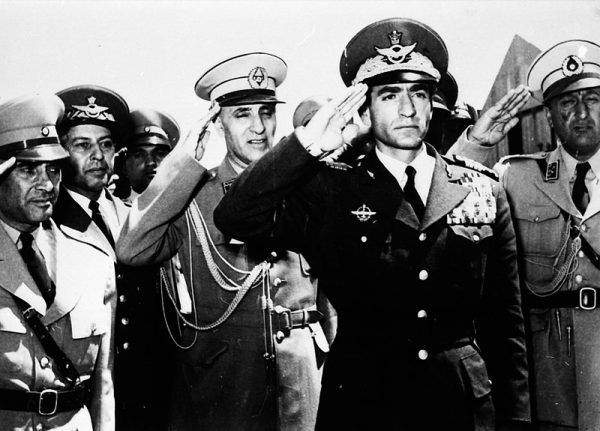
Shah Mohammad Reza Pahlavi ruled from 1941, and from 1953 he had full power in his hands.
Crazy poet with homosexual urges
All this caused growing dissatisfaction. Pahlavi's rule was hated - albeit for different reasons - by liberal intellectuals and traditionalist clergy alike. Their attitudes spread to wide strata of society. The first wave of protest rose in 1977. Students, workers, taxi drivers and - perhaps most of all - bazaar shopkeepers, who are an important social layer in Iran, went on strike.
One of the leaders of the protests was the radical clergyman Ruhollah Khomeini. His sermons contained harsh criticism of the Shah and his policies. The Iranian authorities had only problems with him in the 1960s. In order to shut the mouth of the rebellious mulle, he was repressed from time to time:he was locked up, sentenced to house arrest, and finally expelled abroad. He went first to Turkey and then to Iraq and France.
However, it did not stop there. In order to finally discredit the clergyman-opposition, in January 1978 an article appeared in the large daily "Ettela'at" in which Khomeini was called, among others, a British agent. Since he was Indian, he was also described as "a mad Indian poet with homosexual desires." In addition, was recalled that his wife was a "street dancer" . No wonder the publication sparked the fury of Khomeini's supporters. They took to the streets and caused riots, in which the first fatalities were killed. It was the spark that brought a coup in the country a few months later.
Islamists burn up cinemas
Dissatisfaction grew every day, and so did the frequency of social unrest. However, the supporters of ayatollah did not choose the means themselves. They protested not only against the Shah's rule, but also against the entire Western way of life. Apart from the demonstrations, there were also attacks on officials. Revival Party headquarters and police stations have been raided, and even cinemas, nightclubs, hotels and banks, perceived by radicals as symbols of the West. When riots broke out in Tehran in April and May, Pahlavi sent his troops to the streets to an extreme.
However, a tumultuous society is difficult to calm down. The real tragedy happened on August 20, 1978. Supporters of Khomeini set fire to the “Rex” cinema in the city of Abadan. 477 people died there, mostly mothers with children. The door was blocked by arsonists, so the people inside were burned alive. For attentive observers it could be a foretaste of what the change promoted by radicals brought with it ...
Meanwhile, Khomeini, still in France, slowly grew into the main leader of the protest movement. Paradoxically, the exile worked to his advantage. In Paris, he was free to proclaim his views. He spoke out frequently for the Western media, which made him a fighter for freedom and democracy. He was listened to with interest and even considered an outstanding thinker. From the West, his sermons, recorded on cassette tapes, were smuggled en masse into Iraq, where they were listened to by supporters of the Islamic revolution.
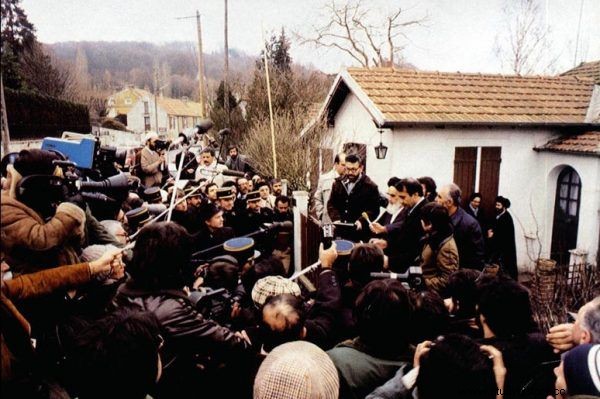
Chomejni in exile gained many sympathizers. Western media saw him as a fighter for freedom and democracy.
What did the Ayatollah promise his listeners? He spoke less about plans to introduce religious rule and more about human rights that were lacking in Iran. In an interview with the German "Spiegel" he said: "Our future society will be a free society, and all elements of oppression, brutality and violence will be destroyed" . He also stressed that all women "will be free, will be free to choose their job, decide about their future and clothes." The near future was to show how far he was untrue.
Cloves in barrels
In an attempt to maintain power slipping from his hands, the Shah struggled from extremes to extremes. He continued to send the police and the army against demonstrations, tightening censorship and regulations on assemblies. On the other hand, by making concessions, he tried to win at least a part of the society. He announced an amnesty, appointed a new prime minister, set up a tribunal to fight corruption and even ordered the arrest of the former head of SAWAK.
It didn't do much. Fighting against the military and demonstrations continued in the streets, setting fire to restaurants, shops and government buildings. Dozens of people died in the clashes. About a million people took part in a protest convened by Islamic clergy on November 26, 1978 . This is how these manifestations are described in the book "Polski bridge spiegów" former diplomat, then the first secretary of the Polish embassy in Tehran, Jan Wojciech Piekarski:
Every Friday after midday prayers there were anti-shah demonstrations. One million, one and a half million, or even two million citizens took part in them. The army appeared in the streets because the police were not able to break up the demonstration on their own.
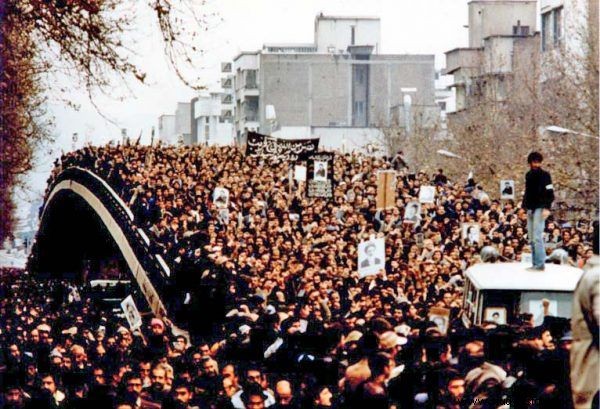
Massive demonstrations expressing both support for and opposition to the Shah gathered hundreds of thousands of people on the streets of Tehran.
98 percent want an Islamic republic?
On January 16, 1979, Reza Pahlavi fled the country. Officially, he went on vacation to Egypt. He wanted to return to Iran after the situation had calmed down. At the same time, Khomeini called on his supporters to fight against the government. So Islamists blocked government buildings. There were regular battles with law enforcement and the Shah's supporters in the streets (there were also those).
The Ayatollah himself joined them on February 1, 1979. He was reportedly welcomed by 2 million supporters in Iran, one of the largest demonstrations in Iranian history. On February 5, Chomejni established his own government. In many places, Islamic revolutionary committees took power.
The Shah's supporters have not yet been defeated. There was a civil war in the country. Most of the army supported Khomeini, so the resistance of the previous authorities was suppressed. However, it was not without casualties. Among others, the commander of the army, General Abdolali Badrei and his deputy, died at the hands of the soldiers supporting the Ayatollah.
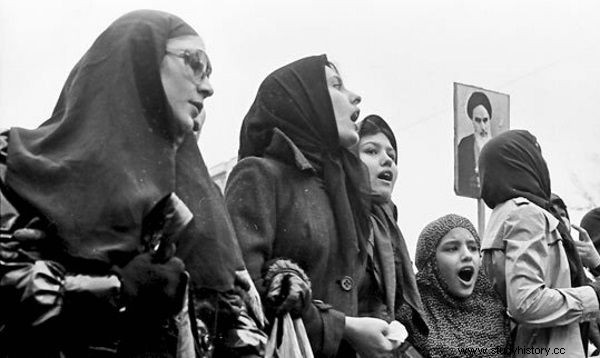
Women also joined the protest movement on the side of Khomeini. Ultimately, the Ayatollah promised them freedom and equal rights…
On February 12, the Islamists broke into the SAWAK headquarters in Tehran. The Islamic Revolutionary Council has seized power. In March, a referendum was held asking the public if they wanted an Islamic republic . According to the official results, 98.2 percent of voters were in favor.
Capture the spy nest
A foretaste of what the new government will look like came on November 4, 1979. A group of several hundred students broke into the American embassy in protest against the US accepting the deposed Shah for treatment. The employees of the facility became hostages. For his part, Khomeini exacerbated the crisis by accusing American diplomats of organizing anti-government conspiracies and espionage. This is what he mentions in the book "Polish bridge of spies" Jan Wojciech Piekarski:
There was another intrusion on November 4th. Staff intervened with Khomeini, and the Ayatollah appeared to order the aggressors to withdraw and release the hostages. He, however, decided to use the situation for political purposes and in his speech praised the students for occupying the "spy nest".
The hostages remained in captivity for 444 days. The attempt by the Americans to recapture them ended in a fiasco and embarrassment to the United States.
Islamic purges
The Islamists quickly set about introducing new orders. As early as in the summer of 1979, they nationalized banks and insurance companies, as well as the most important plants:steel mills, car factories, mines and shipyards. Thousands of people have been arrested and many of them tortured.
Revolutionary tribunals operated throughout the country, which sentenced to death officials of the old regime, mainly military. In total 12,000 soldiers were lost , including as much as 50 percent of senior officers:from major to colonel. All living SAWAK chiefs were also shot.
The list of victims of the new regime did not end there. Many politicians and military personnel were also executed, including the long-time Prime Minister Amir Howejda, the commander of the armed forces General Mehdi Rahimi, the air commander General Amir Hosejn Rabii, the commander of the air force of the land forces General Manuchr Chosrodad and the military commander of the city of Isfahan, General Abdolali Naji. In addition, several dozen ambassadors and several hundred other diplomats, whom the new authorities considered traitors or agents of SAWAK, were recalled.
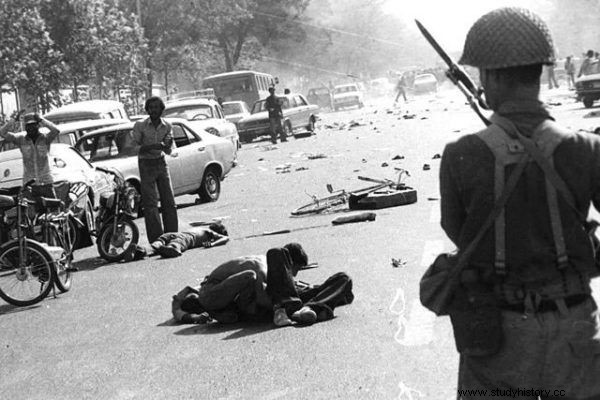
As it turned out, the victims of the revolution were just the beginning. After her victory, purges began and claimed the lives of thousands of people.
In addition to the regular army, a formation called the Revolutionary Watchtower was created, which dealt with the protection of the religious state from "internal enemies" . It became the backbone of the new regime and became famous, among other things, for the bloody pacification of the Kurdish, Turkmen and Baloch uprisings, as well as for the liquidation of oppositionists. Everyone who did not support the denominational state was removed from political life:democrats, left, centrists, communists, secular nationalists. From February 1979 to the end of 1985, approximately 6,500 executions were carried out.
The new "brave" world
New moral rules were also introduced. First, women were banned from swimming in bathing suits. Later, they were ordered to wear costumes in accordance with the laws of Islam. Gender equality has been abolished:men have been granted the right to polygamy and unilateral divorce. The age for marriage has been lowered to nine.
Women who opposed the "reforms" were forced into obedience. The resistant ones were severely punished. In Shiraz, Kerman, Tabriza and Mashhad, there were the first cases of stoning of women in a hundred years. Gender segregation has been introduced in buses, beaches and schools. Representatives of the fair sex were removed from the army, they were forbidden to perform some professions (for example, a judge) and sing in public. Thousands of female workers have been made redundant from public and private institutions and enterprises.
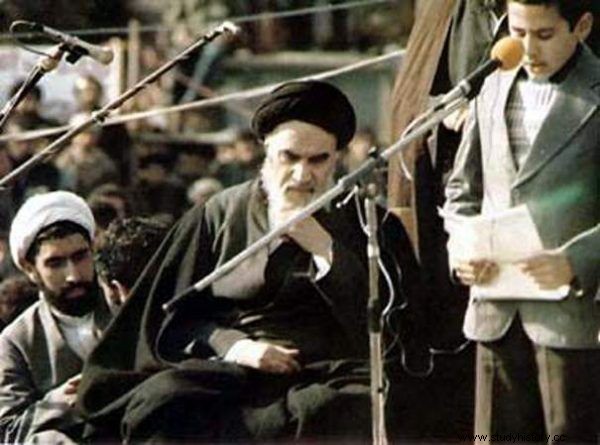
The changes covered practically all spheres of life. In April 1979, the import of alcohol and pork was banned. In July, the Ayatollah Khomeini banned pop music on radio and television. He found that it contributes to the depravation of youth. Soon after, Western movies and books were banned, nightclubs closed, and the wearing of ... T-shirts and shorts was banned.
Publications deemed harmful were publicly burned. Protesters against restriction of liberty were prosecuted and sentenced to imprisonment. The last centers of liberal thought were universities. In 1980, however, they were closed for over two years, and the staff and students were verified. A large number of Iranians soon came to a similar conclusion as the Italian journalist Oriana Fallaci, who was watching the Islamic revolution. She stated: "The Shah was the lesser evil ..." .
